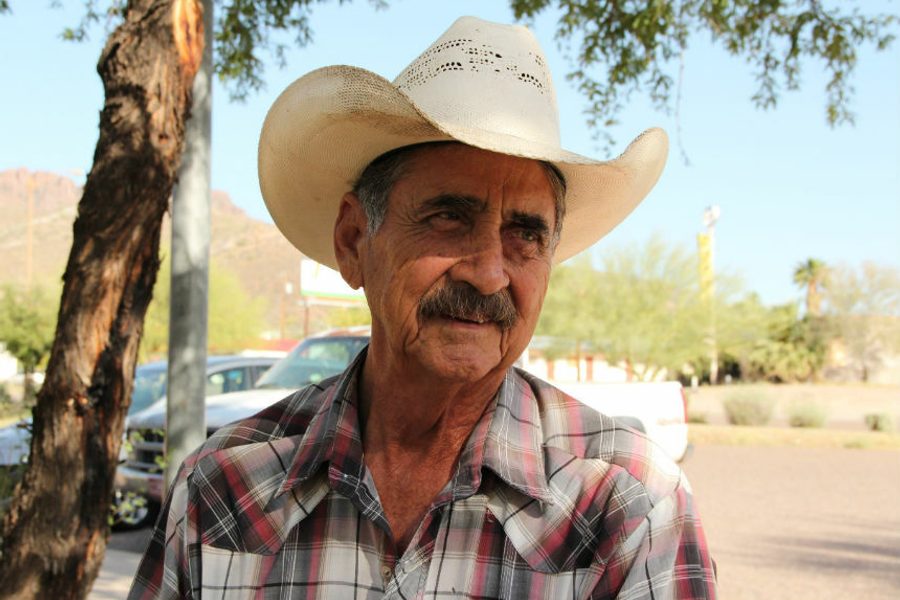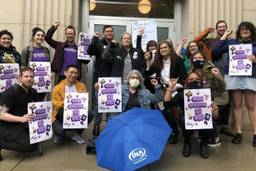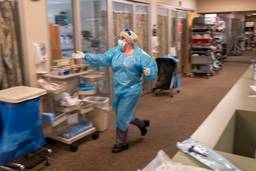
For three years in the early 1970s, journalist Studs Terkel gathered stories from a variety of American workers. He then compiled them into Working, an oral-history collection that went on to become a classic. Four decades after its publication, Working is more relevant than ever. Terkel, who regularly contributed to In These Times, once wrote, “I know the good fight — the fight for democracy, for civil rights, for the rights of workers — has a future, for these values will live on in the pages of In These Times.” In honor of that sentiment and of Working’s 40th anniversary, ITT writers have invited a broad range of American workers to describe what they do, in their own words. More “Working at 40” stories can be found here.
The deep miner Terkel interviewed for Working was employed near the Cumberland Mountains in Appalachia for nearly 30 years, until he contracted black lung and had to retire. Though he himself had many relatives who were miners, he refused to let his son follow in his footsteps, saying “he was gonna get killed over there.”
Danny Avendaño also comes from a mining family, but his father did not forbid him from joining the industry. At age six, Danny would ride a burro up the red hills outside his hometown of Superior, Arizona to his uncle’s small silver mine, where he and his siblings would play at mining. By age 15, he was working as a miner for real alongside his father, “mucking out” waste rock with a shovel in the San Manuel underground mine in nearby Oracle. A few years later, he set his sights on the famous Magma Mine in Superior, an underground copper mine that miners knew to be a ticket to employment anywhere in the world. The hiring agent told him to “serve his country” — then he could come back and get a job. So Avendaño joined the Marine Corps Reserves and headed west for boot camp in San Diego. Six months later, he was back in line outside the hiring office in Superior. The year was 1960; he was 20 years old.
I don’t think he expected to see me back so soon. But he gave me a job. In those days, everyone wanted to work in that mine. The pay was real good. You’d say, “Mom, I don’t need to go to school, I can work in the mine.”
There were a lot of tramp miners. They would travel from Utah, Colorado, Idaho — like tourists — they would just travel from one mining town to the next. Most were drunks. And they were single guys. No woman would put up with that tramping all over the country, living out of a box! The company would want to hire them because of their experience and because they would work cheaper.
There wasn’t training in those days. They would just throw you in there with some old man who cussed all the time, and you’d learn or you wouldn’t. I learned a lot; I met some real good people.
This mine was real inconsistent: The ground was hard in some places and soft in some places. You would put a timber up, and the next day it would be down in the ground from the pressure. It was dangerous. The fumes could kill you, or explosions. It could bury you alive. Every time you go down in that cage you bless yourself. Guys died there. But I never got hurt. I believed in doing things right.
In this profession you can’t take shortcuts. One mistake and you’re dead.
I was a contract miner — they paid us by the “cubes,” or amount we produced. There are two kinds of miners: Those who just put in their eight hours, and those who want to make money. I was the second kind. We never even stopped to eat lunch. When new guys would come on, we said, “Don’t bother packing a lunch. If you want to buy a new car, impress your girlfriend, the way to do it is to work.” We’d run to our worksite in the morning. We’d blast twice a day. We didn’t want to stop working. Eventually the boss would have to come get us, saying, “It’s time to go.”
Talk to the girls, drink coffee and work — that’s what I did. But I never volunteered on my days off.
There was a union, the Steelworkers. There was a union hall in town. We needed a union when we started there; the way they were running the mine was bad. There was no ventilation and dust everywhere. There were two strikes while I was working there, one for six months. After the strike, things got better. They put in a cooling system: Chilled water would be pumped through copper pipes and those blew the cool air out. There were two of them, but it only went so far. It was still hotter than hell, because we were down 3,400 feet in the ground.
I would drill, blast, all of that. There were three shifts: the day shift, swing shift and graveyard. Day shift was too crowded; you were always bumping into people underground. I liked graveyard the best. Except I couldn’t sleep in the day, I had to get drunk. There was a bar on every corner in those days. You’d come out of that hole so dry, you’d come out and soak up that booze.
In 1970, Avendaño took a job in West Papua, Indonesia at the Grasberg mine run by Freeport-McMoRan. The mine would later become the subject of a high-profile environmental and human rights lawsuit.
We lived in a little compound, like a club, with lots of beer. At night you would hear the Indonesian army shooting. It was a different world. We would take pictures of the Papuan locals, naked, still using bows and arrows. Unbelievable. We’d fly to Australia once a month for “R-and-R.” It was beautiful, it looked just like here. I met a lot of Australian miners. They would wear shorts underground, and no shirts.
Avendaño worked at a few other mines around the country, including the Silver Bell silver mine in Arizona and the gold mines of Northern California. Eventually, he returned to Superior and worked in the Magma Mine again. In 1982, a rapid series of cave-ins killed four men; later that year, the mine closed as copper prices plummeted.
They would call me a troublemaker. I knew my job and I did it well. But at that point my bosses were kids. They were just yes-men for the company.
One day, I was on the afternoon shift, and they told me to turn in my stuff. The mine was closed. Just like that. They didn’t give us any warning. Some guys had just bought new cars or new houses; they were in debt.
Avendaño stayed in Superior to work in construction and ranching. When the mine reopened with a smaller workforce in 1989, he went back underground.
I did my job the best I could. You think if you do that, someone would appreciate it. You’d be wrong!
My feet started hurting around 1992. All those years wearing rubber boots, with your feet always wet— it got to the point where I could barely walk. I was always the last one out of the changing room. They’d say, “Come on, old man!”
I had surgery and was out of work for a year. When I tried to come back, they said, “Your mining career is over.” I was fired with no pension; that was that. The guy laughed at me as he gave me the slip. I said, “Can’t you give me something?”
“Take us to court!” he said.
So I did. I got a lawyer. Eventually, I got a $12,000 settlement. After all those years, never even taking lunch. No pension. I couldn’t get a job anywhere else, I couldn’t pass the physical. They screwed me.
My father went through that too. He worked there for 46 years. When a man’s getting old, they put him in the tool shed or the guard shack, searching lunch boxes to make sure people don’t steal something. And they watch him like a hawk. You make one mistake and you’re fired with no pension. My father was doing that, then one day they told him to go back to his old work underground. He was too old, so he refused. And they fired him. You’d think they’d have a little compassion. But they don’t give a damn.
He got a lawyer and had to fight for his pension, and he got it in the end.
The mine closed again soon after Avendaño was fired. Now, two decades later in the same area, the multinational company Rio Tinto is trying to open a new copper mine, which would use a controversial method called block cave mining to tap deposits 7,000 feet below the surface. Avendaño still lives in Superior, and he is among many retired miners who oppose the new Rio Tinto mine plans.
The old days are all gone. Muscles don’t mean anything now. Now if you can work a computer, you’ve got a job. But this new way there won’t be real jobs. There’ll be some in construction, but not after that. It’s all about robotics. They’re making people promises, but promises don’t mean anything. This whole town is dying. It’s sad.
Now Avendaño’s son lives in the Superior house where Avendaño grew up. Avendaño himself lives just outside of town in a one-room home where he still cooks on a wood stove and tends horses and chickens. He has a little side business making custom spurs and bridles.
The cowboys love them. Every cowboy in Globe, a nearby mining town, has a pair of my spurs. It’s getting to the point it’s too much work. But I’ll never retire. Then I would go in the hole and die. I need to do something. My wife, Gloria, died in 2004. We were married almost 40 years. She was mean, oh boy. I’m not going to say it was bliss, but we had fun. We had two sons. They never worked in a mine. I’m glad they didn’t. You’ve got to love it. I did. The heat, the challenge, it just gets in your blood.
Kari Lydersen is a Chicago-based journalist, author and assistant professor at Northwestern University, where she leads the investigative specialization at the Medill School of Journalism, Media, Integrated Marketing Communications. Her books include Mayor 1%: Rahm Emanuel and the Rise of Chicago’s 99%.







